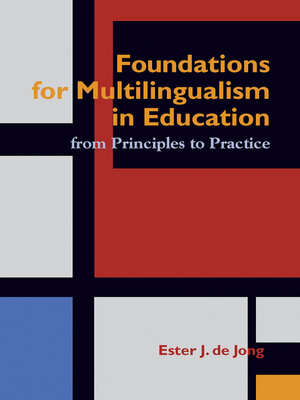Foundations for Multilingualism in Education
ebook ∣ From Principles to Practice
By Ester J. de Jong

Sign up to save your library
With an OverDrive account, you can save your favorite libraries for at-a-glance information about availability. Find out more about OverDrive accounts.
Find this title in Libby, the library reading app by OverDrive.



Search for a digital library with this title
Title found at these libraries:
| Library Name | Distance |
|---|---|
| Loading... |
A note on terminology. The terms "multilingualism in education" and "multilingual schools" refer to schools with students from two or more language backgrounds, including (a) bilingual eduction programs serving bilingual communities, (b) general education programs that include ELLs/bilingual learners from linguistically and culturally diverse backgrounds, and (c) educational programs that aim for multilingualism as a goal and anticipated outcome for students. This comprehensive text supports an important move in educating ELLs/bilingual learners: All educators, not just those who work in bilingual education programs, need to be prepared to look at educating ELLs/bilingual learners from a bilingual perspective.
This foundational text shows bilingual education and general education teachers how to look critically at theory, research, policy, and practice on educating ELLs/bilingual learners from a dynamic, pluralist, multilingual perspective. De Jong also includes and expands on traditional discussions of bilingual (e.g., transitional, one-way and two-way dual language) and general education (e.g., structured English immersion, English as a second language/English language development) program models by presenting four key principles found in quality programs for ELLs/bilingual learners in any setting:
Using rich examples from classrooms and schools, de Jong clearly shows how these four principles are enacted and reflected differently in bilingual education and general education contexts. She also invites teachers to apply these principles to their own practice, and to use their findings to inform their own advocacy efforts.
Key Features







